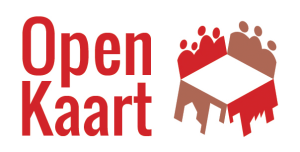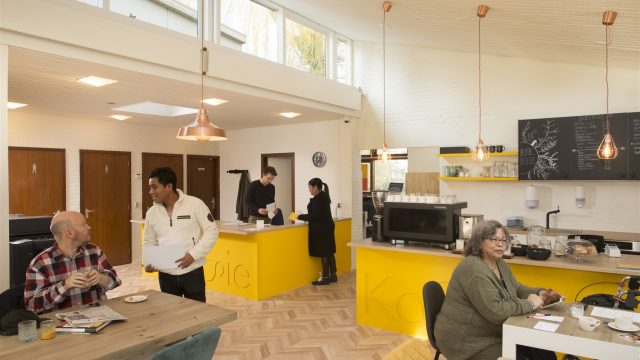Creative Spaces for Creative Ideas, is the title of a book filled with inspiring examples of beautifully designed studios from all over the world. The painter’s studio (NL) designed by Open Kaart is one of those examples. Pieter wrote the forward for the book which is published in both English and Mandarin. It is available for purchase starting today. The following is a short summary of the introduction
People who are looking for inspiration go for a walk, search the internet, or go on vacation. Companies that need inspiration to think about the future of their organization rent an inspiring space outside their office for a day. This helps them to come to new perspectives. And what do people with a creative profession do if they want to be creative? They go to their workplace. Day after day.
Being creative is what they do. This puts high demands on their direct working environment. And, as you would expect, many of these creative people also have creative ideas about the design and layout of these spaces. This book consists of the world’s best examples. However, this book does not carry the title “Creative Ideas for Creative Spaces”. Exactly the other way around. It is the Creative Spaces that are responsible for the Creative Ideas. Creative space is therefore also mental space.
The search for the holy grail
How a creative space stimulates the creativity of its users is a question of identity. The answer is not a universal standard, but a personal framework to act upon. How does the public influence the outcome of a football match? Have protest songs influenced the course of history? How does an entourage influence the course of a conversation? These are questions that are academically unanswerable, but questions for which you have to develop an intuitive vision in order to act.
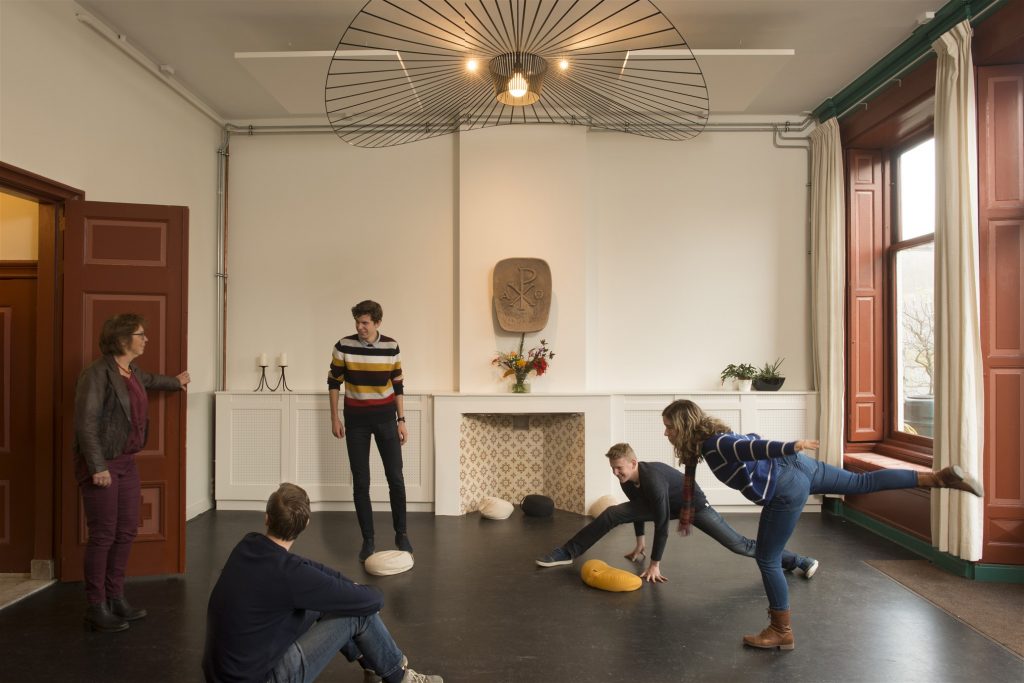
The clients for projects about space for creative ideas are not limited to creative professionals. And it is never an isolated question. A creative couple wants their studio at home (inspiration sometimes comes in the evening) and wants it to be mobile in case they move in the future. A professional photographer also aims to make the creative manufacturing industry visible in his neighborhood. A company is looking for a sense of home and creativity to retain employees. While a social foundation is looking for accessibility and informality.
This question is not limited to creative functions. Even when removing sidewalk tiles for a more water-sensitive outdoor area or setting up a mobility scooter garage (NL) in a care home, a creative approach can make the difference. So, the question in which creative spaces creative ideas arise is not only driven by curiosity about the lives of creative people. How wonderful would it be if not only the people in this book, but all of us, can work and live in an environment that inspires us?

Proces: Where the Magic Happens
According to Mel Rhodes, creativity can relate to the 4 Ps: press, person, product, and process. We are convinced that the creativity of the process in which a space itself is designed matters. Just as you feel at home with photos of family or vacation and your own things that carry a history, your creativity can be stimulated by a place that has been designed and decorated with great joy and attention.
Place: Inspired by you
But creative spaces are not just for creative people. Because what is creativity anyway? In which places do you need creative ideas? In the kitchen, the carpentry workshop, on the sports field, when waiting for the bus, in the sewing workshop or the play corner? When shopping, in traffic situations, filing a tax return and in conversation with your manager? In short, creative spaces are important for everyone. In fact, perhaps a touch of creativity in the non-places where we do our shopping and our work is more vital than for the people in this book who are already creative of themselves.
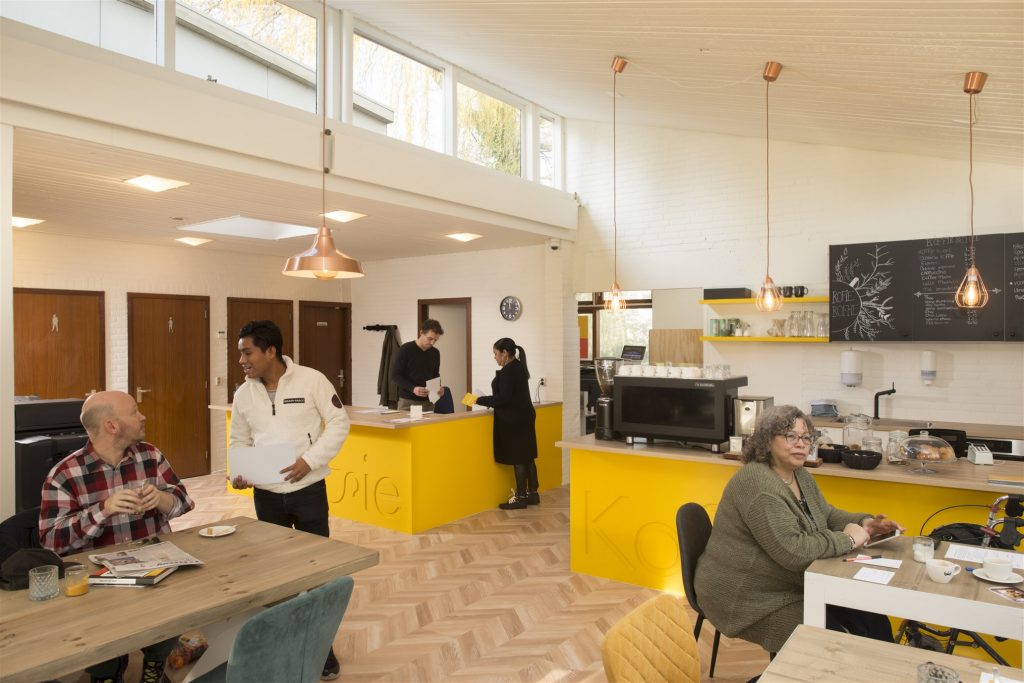
Co-creating Creative Spaces
A creative place starts with the question: what else could this place be? Just as art allows you to look at the world through different eyes, design allows you to see your everyday environment in a different light. We often ask this specific question of residents, students, churchgoers, volunteers and employees. The answers and the responses to those answers often lead to insights about use and experience that you would never get by only asking about use and experience. What seems fixed becomes fluid and small things can become very important.
For us, as creative professionals, it is precisely the everyday and sometimes dull environment of our clients that can release a stream of creative ideas.
The paradox here is that, for us as creative professionals, it is precisely the everyday and sometimes dull environment of our clients that can release a stream of creative ideas. For example, we spent a day at the kitchen table of private individuals who wanted to renovate their home. While the children crawled under the table and their mother walked to the washing machine in the back of the garden, we came to the idea to drastically change the relationship between house and garden. By using a temporary office in an old building, we got exactly enough insight to solve three problems in one go. And some lost pieces of furniture gave rise to the idea of restoring the meeting function to a space.
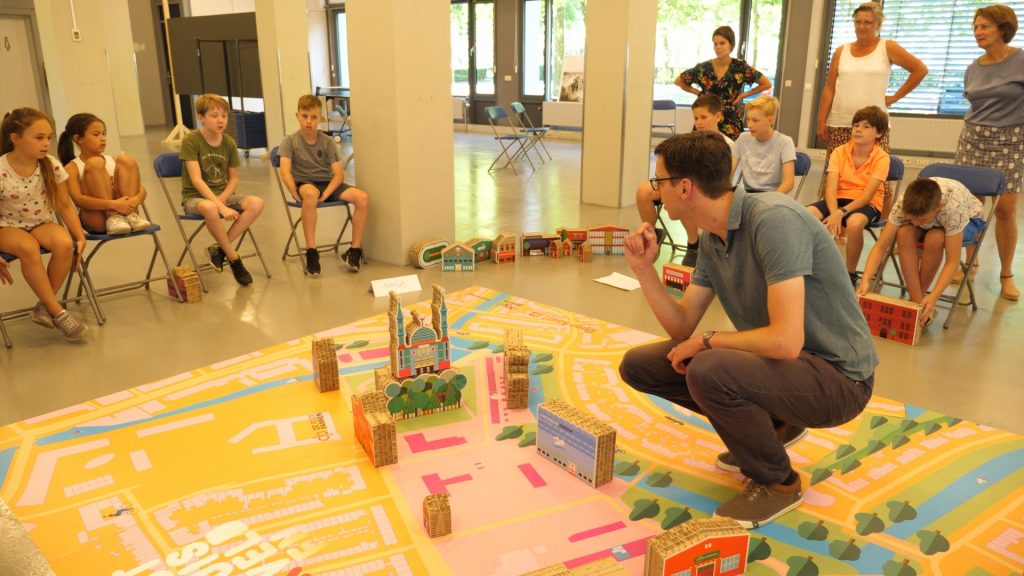
Space for Imagination
As architects, we are trained to see unexpected possibilities in something ordinary. Once you have seen possibilities in front of you, it is impossible not to see them. The art of co-creation is to let users nourish those ideas consciously and unconsciously and to weave them into the possibilities that you see. The point is then to shape metaphorical creative space that releases creative ideas in interaction. That space is not a physical space, but a mental space.
Creating imaginative space for an alternative reality is an important task for those who want to work with creative spaces. This mental space often benefits from physical space. Models and test setups help with this. Draw out the contours of the space you have in mind with a ribbon or tape and walk through it. Or pre-enact this new reality one afternoon with your friends or colleagues. It provides a lot of fun, connectedness, and new creative ideas.
Let’s allow ourselves more creative space for creative ideas in our schools, work environments, hospitals and homes. So that the studios of artists, photographers and designers gathered here inspire us to look differently at our own daily environment.
